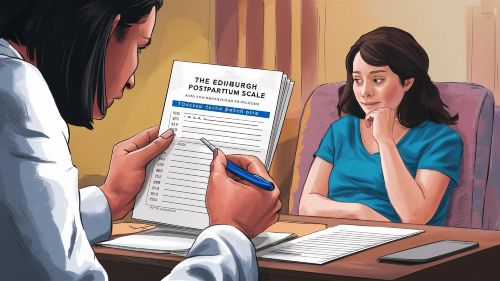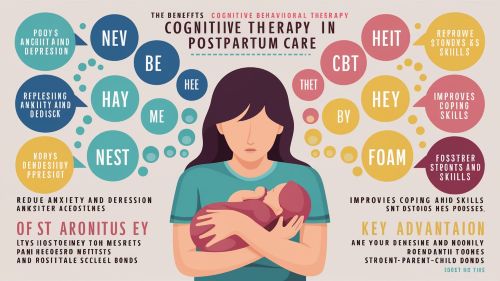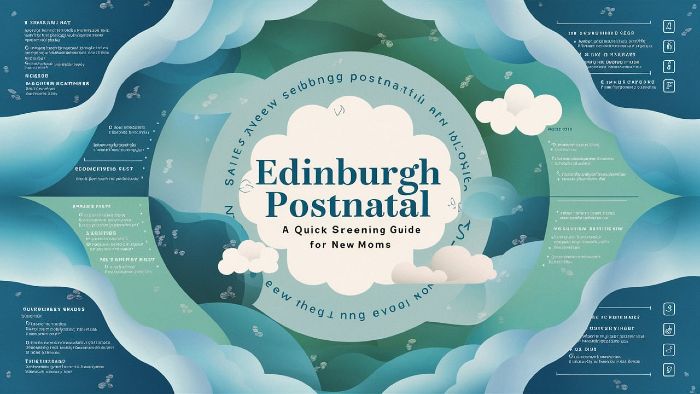In the blur of new motherhood, your own feelings can get lost. You’re exhausted, your hormones are in free-fall, and you’re trying to keep a tiny human alive. So when you feel a persistent sadness, a constant hum of anxiety, or a strange sense of numbness, it’s easy to ask: Is this normal? Or is it something more?
It can feel impossible to know.
What if you had a simple tool—a quick, 10-question compass—that could help you get your bearings?
Meet the Edinburgh Postnatal Depression Scale (EPDS). It may sound formal, but it’s a simple and powerful screening guide designed to help you check in with yourself. This isn’t a test you can fail. It’s a private first step toward understanding what you’re feeling.
This quick guide will walk you through what the EPDS is, how to use it, and what to do with the results.
What is the EPDS? Your Personal Weather Report
The EPDS is a 10-question checklist used by doctors and midwives all over the world. It’s a screening tool, not a diagnostic test.
What’s the difference?
- A screening tool is like a thermometer. It can tell you if you have a fever, signaling that something is wrong.
- A diagnostic test is like a full workup by a doctor to find out why you have a fever (e.g., the flu, an infection).
Key Takeaway: The EPDS is not a grade on your motherhood. It is a compass, designed to give you a quick, clear reading of your emotional state over the last week.
How to Take It: A 5-Minute Check-In
For this to be helpful, you need to be radically honest with yourself. This is for you.
- Find a quiet moment. (We know, easier said than done! But try.)
- Read the prompt: The questions are about how you have felt over the past 7 days.
- Go with your gut: Choose the answer that feels closest to your experience. Don’t overthink.
The Edinburgh Postnatal Depression Scale (EPDS)

In the past 7 days…
1. I have been able to laugh and see the funny side of things.
* (0) As much as I always could
* (1) Not quite so much now
* (2) Definitely not so much now
* (3) Not at all
2. I have looked forward with enjoyment to things.
* (0) As much as I ever did
* (1) Rather less than I used to
* (2) Definitely less than I used to
* (3) Hardly at all
3. I have blamed myself unnecessarily when things went wrong.
* (3) Yes, most of the time
* (2) Yes, some of the time
* (1) Not very often
* (0) No, never
4. I have been anxious or worried for no good reason.
* (0) No, not at all
* (1) Hardly ever
* (2) Yes, sometimes
* (3) Yes, very often
5. I have felt scared or panicky for no very good reason.
* (3) Yes, quite a lot
* (2) Yes, sometimes
* (1) No, not much
* (0) No, not at all
6. Things have been getting on top of me.
* (3) Yes, most of the time I haven’t been able to cope at all
* (2) Yes, sometimes I haven’t been coping as well as usual
* (1) No, most of the time I have coped quite well
* (0) No, I have been coping as well as ever
7. I have been so unhappy that I have had difficulty sleeping.
* (3) Yes, most of the time
* (2) Yes, sometimes
* (1) Not very often
* (0) No, not at all
8. I have felt sad or miserable.
* (3) Yes, most of the time
* (2) Yes, quite often
* (1) Not very often
* (0) No, not at all
9. I have been so unhappy that I have been crying.
* (3) Yes, a lot
* (2) Yes, sometimes
* (1) Only occasionally
* (0) No, never
10. The thought of harming myself has occurred to me.
* (3) Yes, quite often
* (2) Sometimes
* (1) Hardly ever
* (0) Never
IMPORTANT: A Critical Pause at Question 10
If your answer to question 10 is anything other than “Never” (a score of 0), this is a sign that you need immediate help. Suicidal thoughts are a serious symptom of a treatable illness. They are not a sign of weakness or a character flaw.
Please take one of these actions RIGHT NOW:
- Call or text the 988 Suicide & Crisis Lifeline. It’s free, confidential, and available 24/7.
- Go to the nearest hospital emergency room.
- Call 911.
- Tell your partner or a trusted loved one that you are having these thoughts and need help getting to safety.
Your life is precious. Help is available and you can get better.
[This section MUST be visually distinct. Use a “Cover” block with a red or bright yellow background, large font, and bold text.]
Understanding Your Score: What the Number Means
Add up the numbers in parentheses for your 10 answers. The highest possible score is 30.
- Score of 0-9: This suggests a low likelihood of a clinical mood disorder. If you still feel you are struggling, trust your instinct and talk to someone. You don’t need a high score to deserve support.
- Score of 10-12: This is the “watch and wait” zone. It indicates you may be experiencing mild to moderate symptoms. It’s a clear sign to talk to your doctor and monitor how you’re feeling.
- Score of 13 or higher: This indicates a high probability that you have postpartum depression or anxiety. A score this high is a strong signal to seek professional help as soon as possible.
Remember, this is not a grade. A higher score does not mean you are a bad mother. It means you are a mother who is suffering from a more severe illness and needs more support to get well.
[Insert an image here representing clarity or a supportive hand.]
The Next Step: Taking Your Score to a Helper
Your score is a piece of data. Now it’s time to use it to start a conversation.
Who to talk to?
- Your OB-GYN or midwife
- Your primary care doctor
- A therapist or counselor
- Your partner or a trusted friend (as a first step to getting professional help)
How to start the conversation (sample scripts):
It can be hard to find the words. Try these:
- To your doctor: “I took the Edinburgh Postnatal Depression Scale, and my score was a [Your Score]. I’m really struggling, and I think I need help.”
- To your partner: “I did an online screening for PPD and my score was high. It confirms that what I’m feeling is real and serious. Can you help me make a doctor’s appointment?”
Bringing your score with you is a direct, powerful way to communicate the depth of your struggle, especially on days when you feel like you can’t explain it.

Frequently Asked Questions (FAQ)
Q1: Can I use this to diagnose myself with PPD?
No. The EPDS is only a screening tool. It can tell you that you might have PPD, but only a doctor or mental health professional can give you an official diagnosis after a proper evaluation.
Q2: What if my score is low, but I still feel awful?
Trust yourself. You are the world’s leading expert on you. If you feel like something is wrong, you deserve to be heard and supported, regardless of what a 10-question quiz says.
Q3: When should I take the EPDS?
Your doctor will likely give it to you at your 6-week postpartum checkup. However, you can use this guide to check in with yourself anytime in the first year after birth if you’re feeling concerned about your mental health.
Your First Step Back to Yourself
The EPDS is a small but mighty tool. In less than five minutes, it can cut through the confusion, validate your feelings, and give you a clear, concrete starting point.
It’s not a judgment. It’s not a grade. It’s a compass, pointing you toward the help and support you need to navigate this challenging season and find your way back to feeling like yourself again.
Disclaimer: This guide is for informational purposes only and is not a substitute for professional medical advice. If you have thoughts of harming yourself, please seek immediate emergency help.
